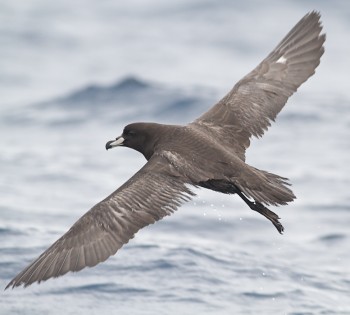
Tracks from four different Westland Petrel adults across the annual cycle (two males and two females)
A news article on a study of the ACAP-listed and globally Endangered Westland Petrel Procellaria westlandica, endemic to New Zealand, follows.
“A Department of Conservation team, with field work led by Westport based biodiversity ranger, Kate Simister, has been funded to conduct three years of research into Westland petrels / tāiko. The funding comes from the Conservation Services Programme, which monitors the impact of commercial fishing on protected species, studies species populations and looks at ways to mitigate bycatch.
The new funding has allowed the work programme to expand to cover a range of new projects not previously attempted with this species. These include:
1. Understanding burrow occupancy rates in this species to determine how burrow mapping and nest counts can be related to numbers of breeding pairs. In particular how the status of apparent non-breeding birds occupying nest sites changes over time (e.g. are these pairs skipping breeding attempts, failed breeders or do these birds lack a partner?)
2. Investigating the diving behaviour of Westland petrels using time-depth records to determine their risk profile from fisheries methods such as surface and bottom long-lines.
3. Carry out multi-year tracking of adult birds using Global Location Sensing tags to determine extent of time spent within the New Zealand EEZ and elsewhere in the Southern Hemisphere.
4. Track juvenile birds to determine if they migrate to seas beyond New Zealand.
5. Testing of different tag attachment methods for GPS or Argos passive integrated transponder tags.
The study, currently in the third year of field work and the winter breeding season of tāiko, has recently shared a progress report. The report includes some fascinating early findings and when, complete, will provide extensive data for further analysis through an MSc student programme and new scientific papers.
Findings include dive depth and foraging locations as well as their migration to South America.
For the detail, methodology and early findings, the interim report is available here.”

A Westland Petrel in flight, photograph by Raja Stephenson
Text from the website of the West Coast Penguin Trust.
22 August 2023

 English
English  Français
Français  Español
Español